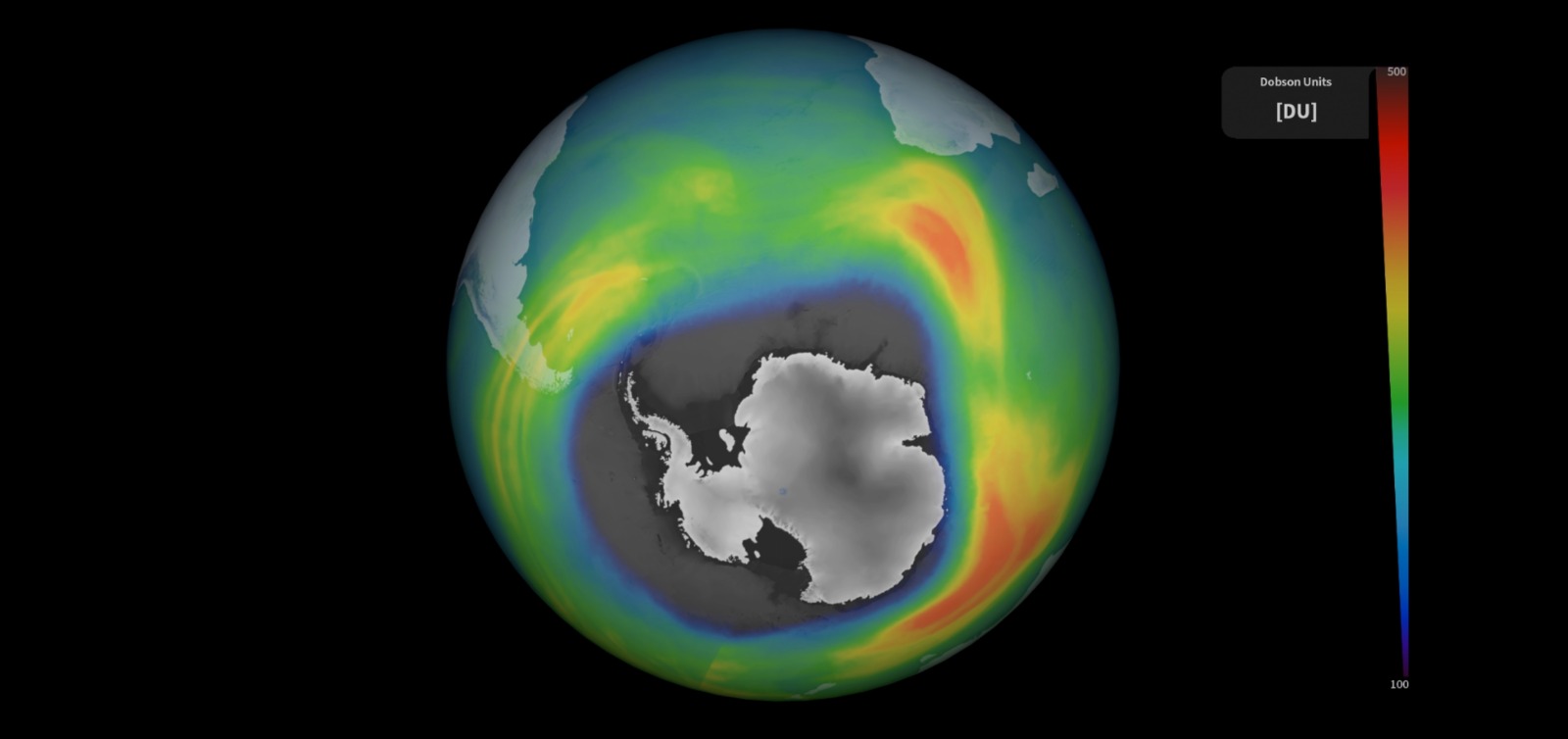BI News,India:The annual hole in the ozone layer grew to a record size in September, according to s cientists with the European Space Agency. However, the hole in the ozone layer appears each year around this time, and varies in size due to temperature and other atmospheric conditions.
The ‘ozone depleting area’ reached 26 million square kilometres on 16 September 2023, an area three times the size of Brazil, according to the European Space Agency.

European Space Agency satellites have been measuring global ozone data for almost three decades. The recent measurements were taken by the Copernicus Sentinel 5P satellite, launched in 2017 as part of the agency’s environmental monitoring mission.
The ozone hole is known to fluctuate depending on the strength of winds in the Antarctic region. It generally reaches its maximum size between mid-September and mid-October. It is a thinning of the atmosphere that happens over Antarctica. The hole appears seasonally during the polar spring, which coincides with fall in the Northern Hemisphere.
Extreme weather and other conditions that exist over Antarctica are said to be the cause of this. The cold, dark winter there allows for unique polar stratospheric clouds to form high up in the atmosphere. They interact with ozone-depleting chemicals, which are activated by ultraviolet light when the sun finally comes up again after months of darkness.
India started ‘Operation Ajay’ to safely rescue its citizens stranded in Israel.
According to Stephen Montzka, lead scientist for NOAA’s Global Monitoring Laboratory, the stratosphere in the springtime over Antarctica is the coldest region of the stratosphere. It’s been isolated from the sun for the whole winter.
S cientists at the European Space Agency said the hole grew to three times the size of Brazil in September, which made it one of the largest on record at that time.
There were some predictions that water vapour emitted from the eruption of the Hunga Tonga volcano in the western Pacific Ocean in January 2022 could make the ozone hole larger than usual this year.
T he ozone hole first came to the attention of scientists in the 1970s and 1980s.








